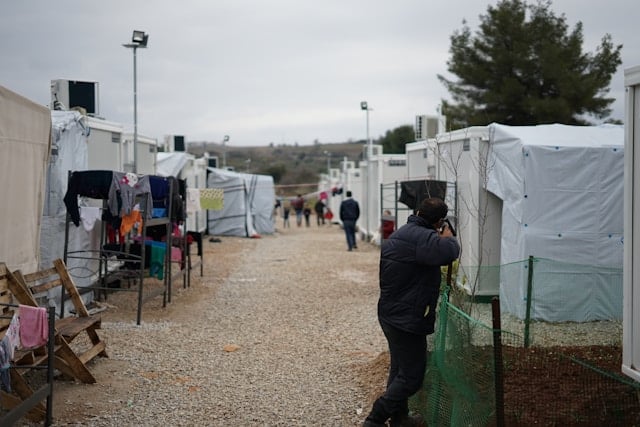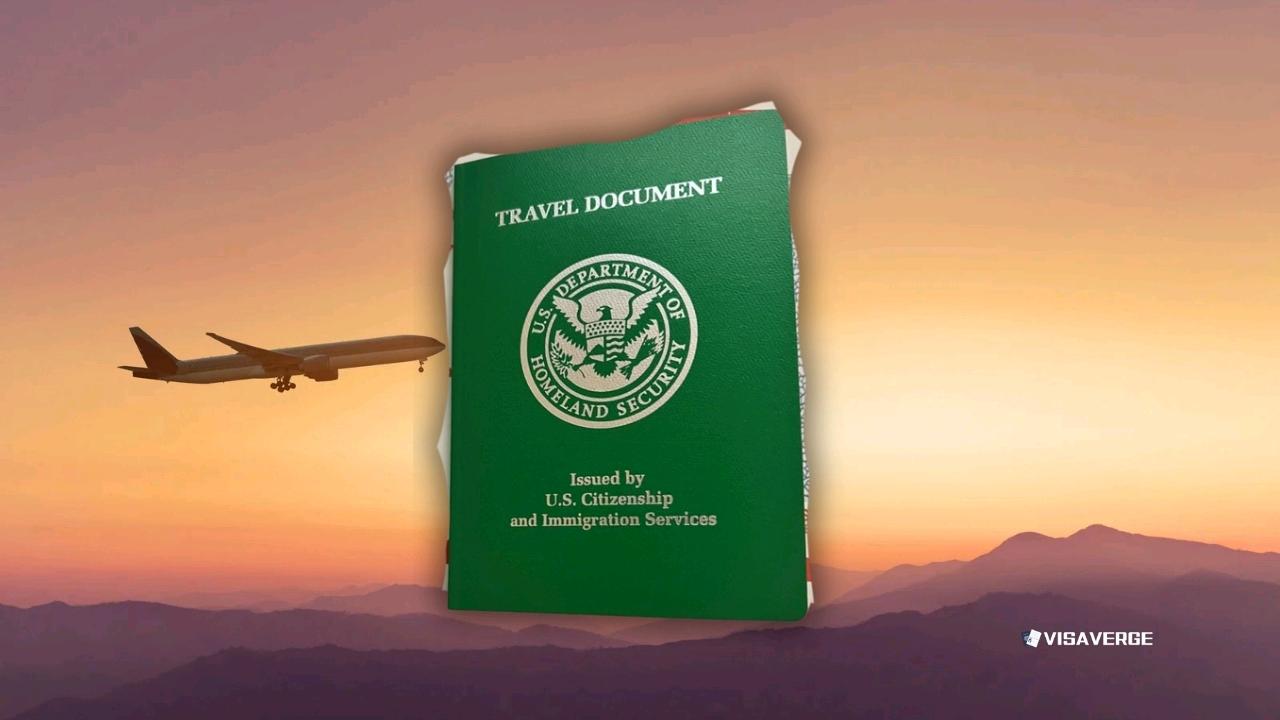(UNITED STATES) The Trump administration says the global asylum system is “broken” and is pushing for major changes at home and abroad, with officials urging other countries to tighten standards and speed removals. Speaking at the United Nations General Assembly on September 25, 2025, Deputy Secretary of State Christopher Landau called on governments to join a coordinated effort to curb what he described as rampant abuse of asylum for work access rather than protection.
He framed the agenda as a defense of national sovereignty and public safety, arguing that acknowledging misuse is not xenophobic.

Recent U.S. Actions
In recent months, the administration has moved from rhetoric to action with several notable changes:
- Implemented new fees for asylum applications — $100 to file and $100 each year to keep a case open (a clear shift from years when no fee was required).
- Narrowed access at the border and slowed some processing streams.
- Stepped up detentions at court hearings and increased case dismissals.
- Prioritized expedited resettlement for select groups (including white South African refugees) while limiting entries from Afghanistan and Haiti under executive orders.
These measures aim to treat asylum as temporary protection, with an expectation of eventual return to the home country rather than a pathway to long-term stay.
The administration insists reforming the global asylum system will protect those with strong, well-documented claims while closing loopholes for others.
According to analysis by VisaVerge.com, this push marks one of the most sweeping attempts by a U.S. administration to reshape international refugee practice since standards took shape after the 1951 Refugee Convention.
Policy Goals and Rationale
Officials frame the drive around three pillars:
- Stricter front-end screening
- Faster decisions
- More removals for those who fail to qualify
Supporters’ arguments:
- Restore trust in a system they say often blurs the line between labor migration and protection from persecution.
- Fees discourage frivolous claims and help cover administrative costs.
- Reforms will focus on people who face a clear risk of harm, returning the system to its original purpose.
Critics’ concerns:
- Human rights groups and immigration attorneys warn the new rules could send people back to countries where they may face persecution or torture.
- Fees and tighter access could block those with little money or no safe route.
- Nationality-based preferences favor some groups while sidelining others.
- Advocacy organizations have filed multiple lawsuits; federal courts have already blocked certain executive steps through injunctions (including attempts to restrict birthright citizenship).
Impact on Individuals and Communities
The practical stakes are high for families and vulnerable people on the move:
- A parent weighing whether to leave home will face higher costs, fewer entry points, and more uncertainty about detention.
- A teenager fleeing gang threats may encounter closed doors before locating legal help.
- Lawyers report more clients detained at hearings and more cases closed before full merits review.
- Processing slowdowns have left some families in limbo while others face accelerated timelines that are difficult to meet without counsel.
Community groups and employers will feel ripple effects:
- Service providers must prepare for faster timelines in some cases and longer waits in others.
- Employers relying on workers with pending asylum claims may see work authorization patterns shift if applications are dismissed sooner.
Legal Battles and Executive Power
Legally, the agenda raises core questions about executive authority:
- The effort tests how far the executive branch can alter asylum access without new laws from Congress.
- Civil society groups argue some steps conflict with long-standing protections.
- The administration contends executive orders and agency rules are within its power to manage borders and foreign policy.
- Several cases are progressing through the courts; more legal challenges are expected as new rules take effect.
Global Implications and Diplomacy
Internationally, Washington’s message is direct: align with tighter screening, or risk being seen as a weak link that smugglers exploit.
- Landau urged countries to speed returns for people who do not qualify and to separate strong from weak claims more quickly.
- Because the United States remains the top destination for asylum seekers (VisaVerge.com), domestic changes can produce regional and global ripple effects.
- Some countries may welcome U.S. cover for tougher rules; others worry stricter standards will push more people onto dangerous routes or trap them in countries lacking hosting capacity.
Diplomatic talks will likely focus on:
- Who assumes responsibility for people turned away
- How to share costs associated with returns and hosting
Next Steps and Political Stakes
The administration indicates more executive orders or legislative proposals could follow to deepen international alignment. Officials emphasize reforms aim to protect those facing genuine danger while deterring misuse.
Opponents argue the proposed remedies are disproportionate and urge Congress and the courts to intervene. The outcome will shape how countries worldwide respond to people seeking safety—either by narrowing access, speeding decisions, or attempting to balance both goals with new safeguards.
Politically, the moment is striking: President Trump’s team is using the global stage to argue that asylum has drifted from its core mission. Supporters call the agenda overdue; opponents see it as a plan to close doors.
Where to Find Official Guidance
For people seeking protection in the United States, official guidance remains crucial. The U.S. Citizenship and Immigration Services asylum page explains eligibility and procedures and remains the central resource for applicants and legal providers.
- USCIS Asylum: USCIS Asylum
While the administration presses for stricter measures, those rules must still fit within existing legal frameworks unless and until courts or lawmakers say otherwise.
Bottom Line
As the United Nations General Assembly concludes, allied governments will decide whether to echo Washington’s approach or pursue different paths.
- The next moves—new executive orders, more lawsuits, or fresh diplomatic talks—will determine whether this push becomes a long-term baseline or a temporary policy shift moderated by courts and legislatures.
- For now, the signal is unmistakable: a bid to rewrite the rules of protection, with lives on the line and the world watching.
This Article in a Nutshell
At the UN General Assembly on September 25, 2025, Deputy Secretary Christopher Landau announced a U.S.-led push to overhaul the global asylum system, calling it “broken” and urging countries to tighten screening, speed decisions, and increase removals. Domestically, the administration has implemented new $100 filing and $100 annual fees, narrowed border access, stepped up detentions, dismissed more cases, and prioritized resettlement for select nationalities while limiting others. Officials frame changes as protecting national sovereignty and restoring asylum’s purpose; supporters say reforms deter abuse and ensure resources for serious claims. Human rights groups and immigration lawyers warn the measures could block vulnerable people and violate protections; several legal challenges and injunctions are already underway. Diplomatically, Washington seeks partners to share returns and costs, with potential global ripple effects depending on other countries’ responses. The coming months will see more executive steps, court decisions, and negotiations that will determine whether these changes become lasting policy.













